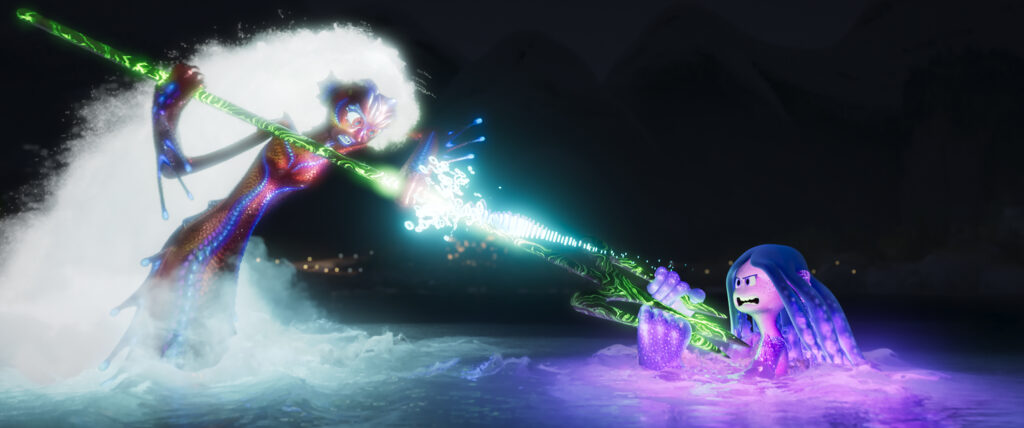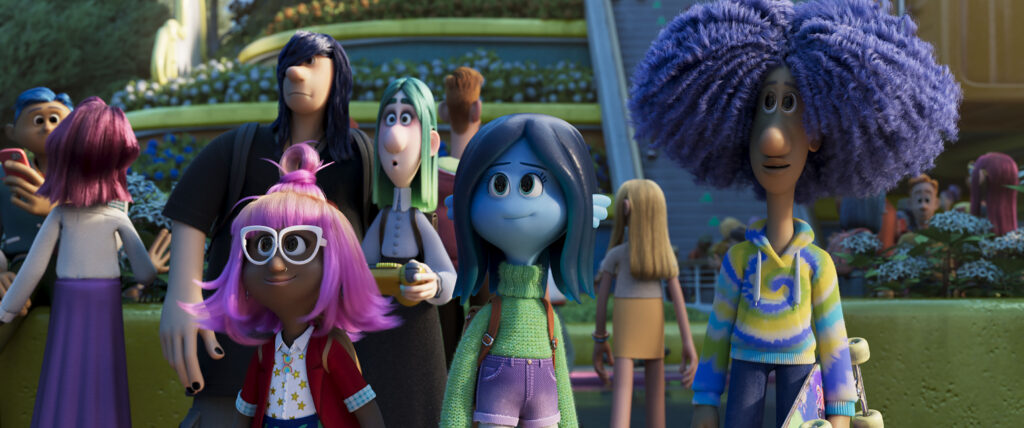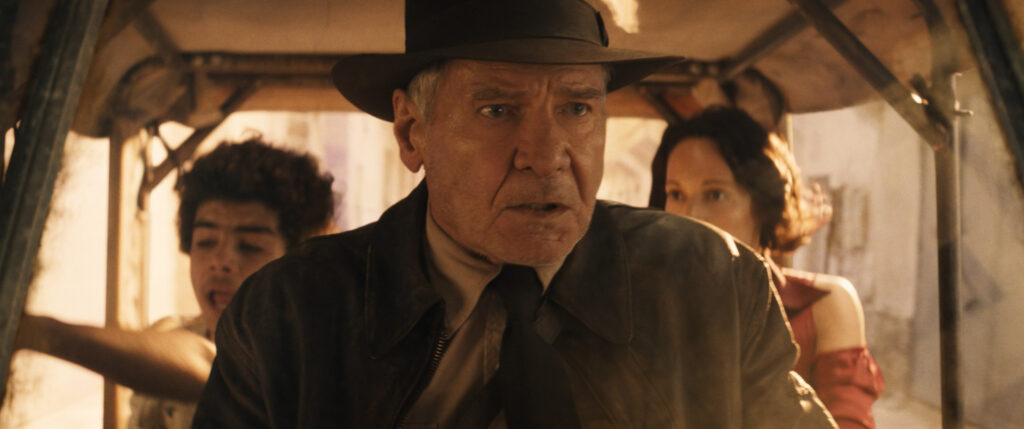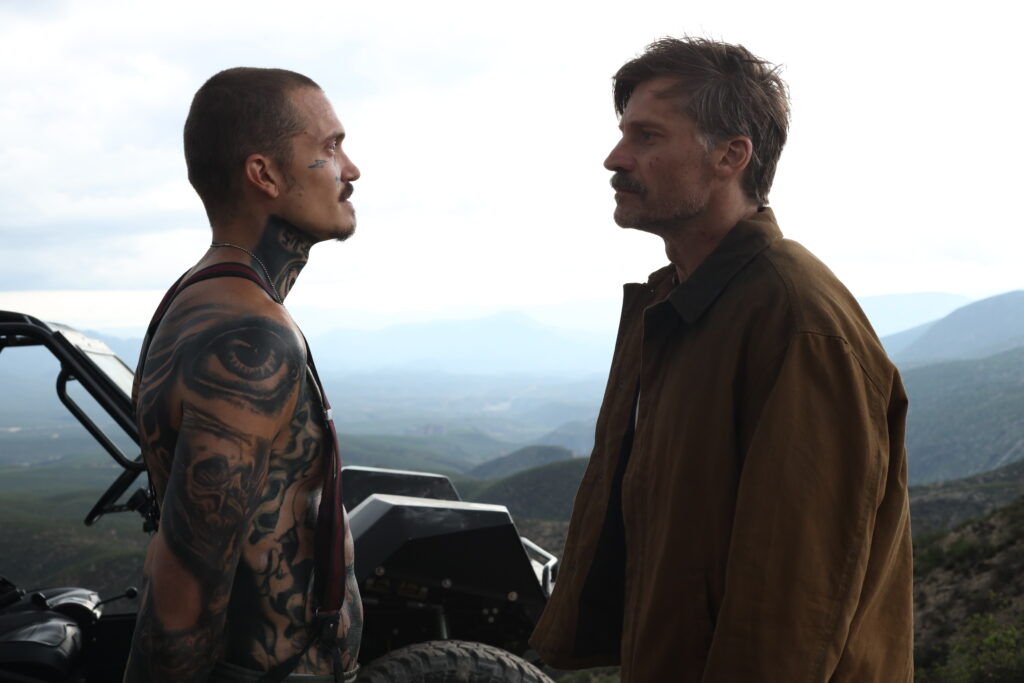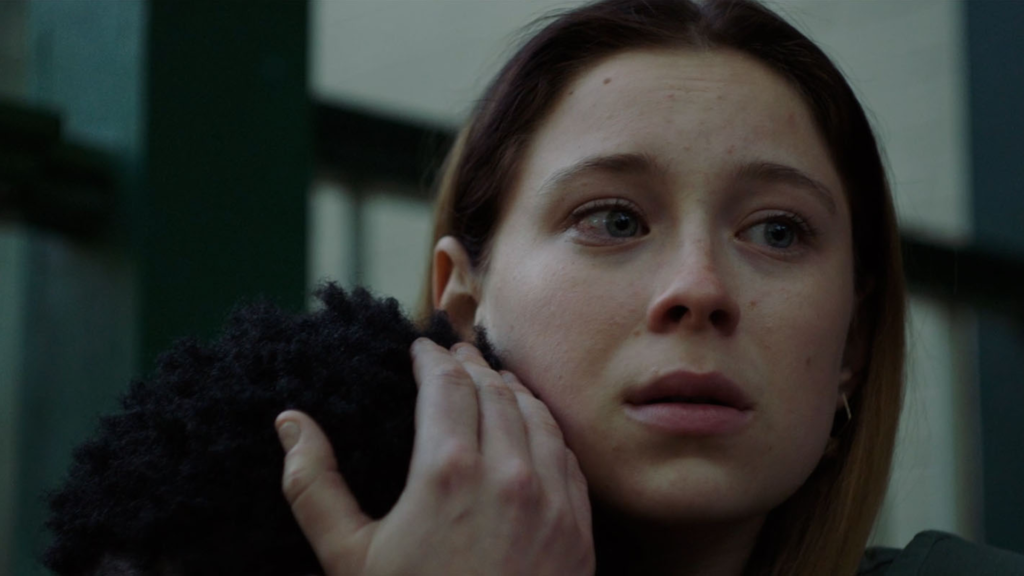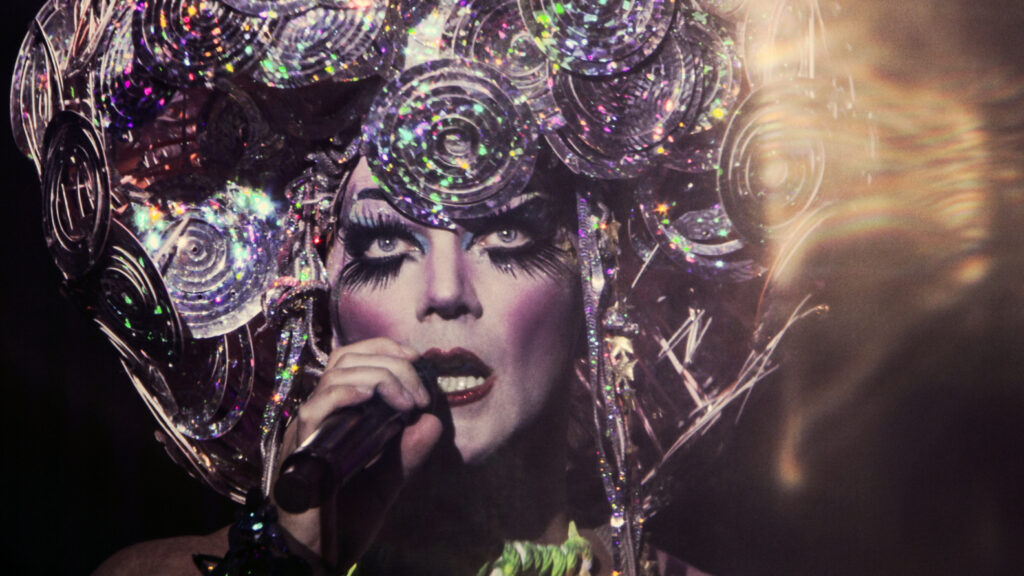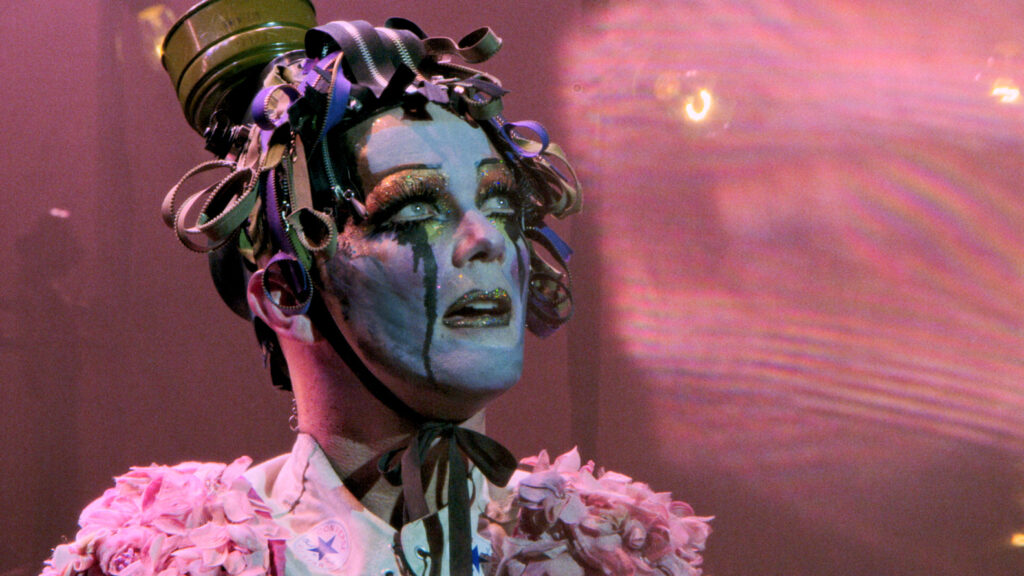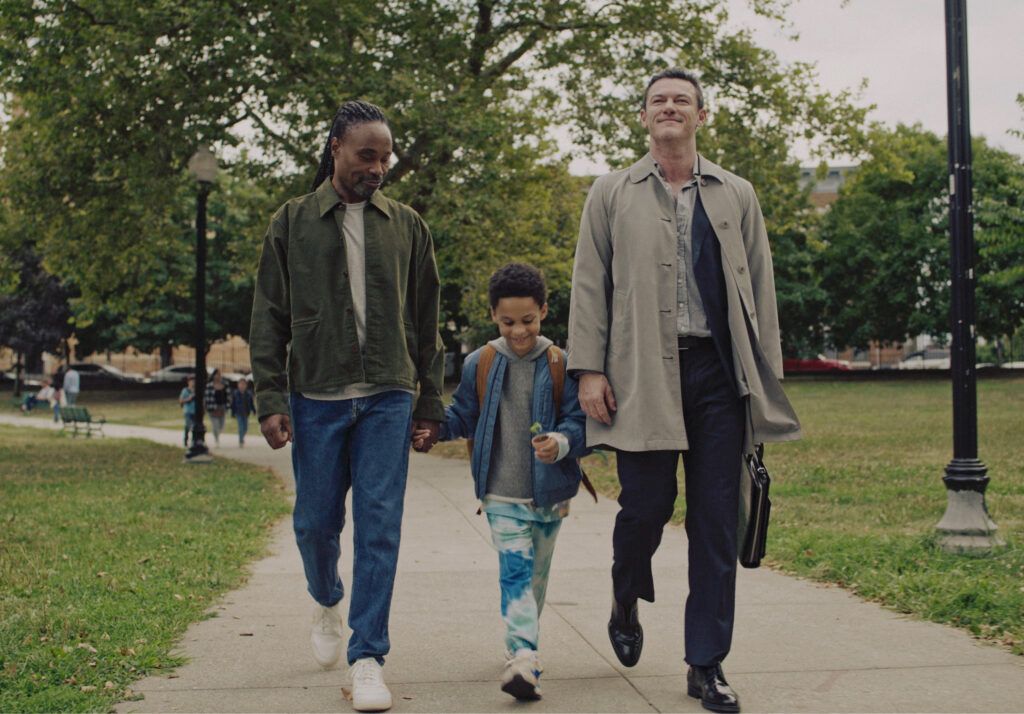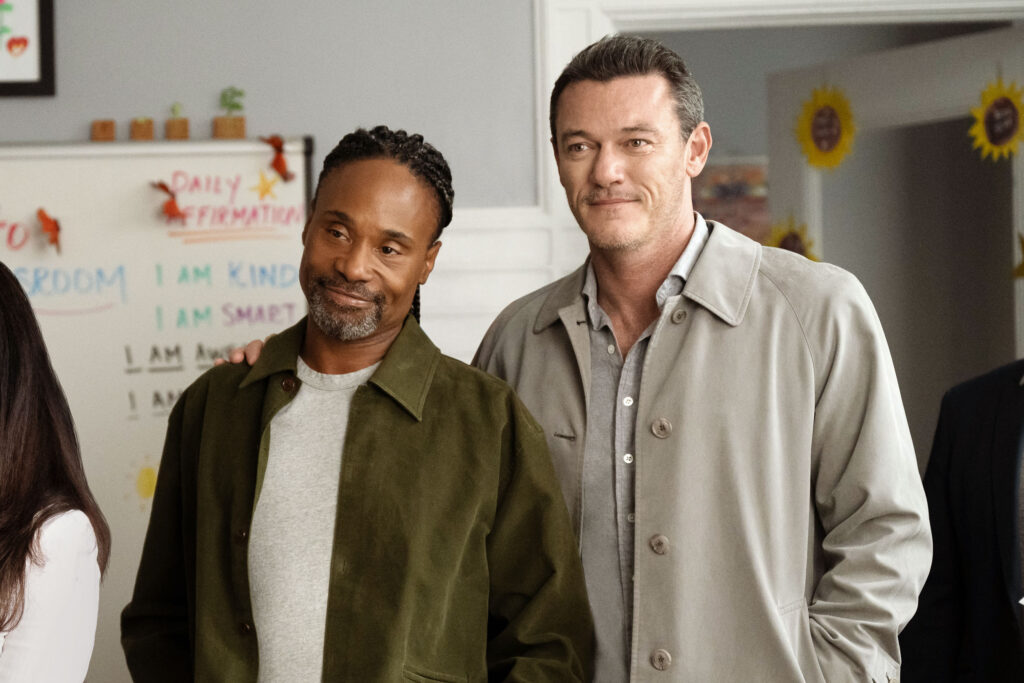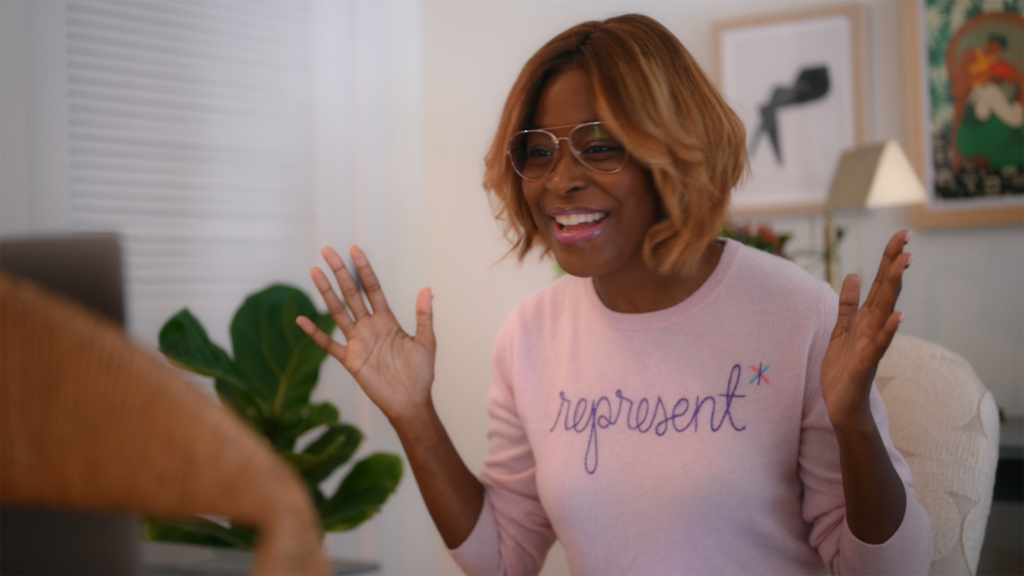July 1, 2023
by Carla Hay

Directed by Julie Cohen
Some language in Spanish
Culture Representation: Taking place in 2021 and 2022 in various parts of the United States and in Berlin, the documentary film “Every Body” features a predominantly white group of people (with some African Americans and Latinos) discussing what it’s like to be intersex, which is being born with male and female genital or reproductive physical characteristics.
Culture Clash: Intersex people often experience non-consensual surgeries as children, cruel discrimination and other traumas when other people assign genders to them that the intersex people might not feel are the correct genders for them.
Culture Audience: “Every Body” will appeal primarily to viewers who are interested in seeing an informative documentary about people in the LGBTQIA+ community who are often overlooked and misunderstood.
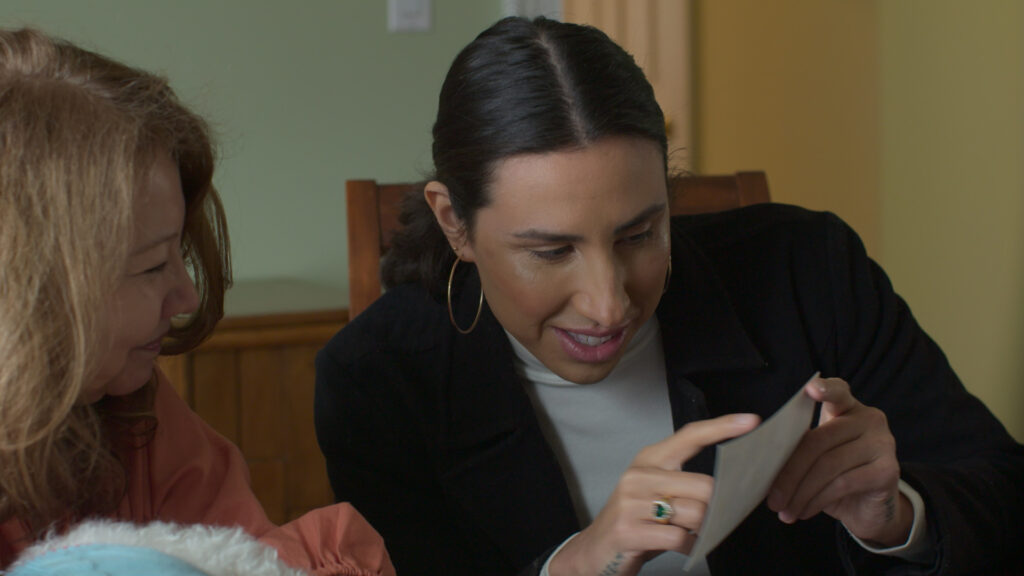
“Every Body” is essential viewing to see how intersex people deserve the same human rights as anyone else. This notable documentary doesn’t overload on talking head interviews. Instead, it focuses on three intersex people who share their compelling stories. “Every Body” had its world premiere at the 2023 Tribeca Festival.
Directed with intelligence and sensitivity by Julie Cohen, “Every Body” doesn’t just include personal stories. It’s also a well-researched documentary that unpeels the layers of medical abuse and shame that go in tandem with the non-consensual surgeries that intersex people often experience as children. The movie is also a call to action to advocate for intersex people’s rights and to help put a stop to abuse of intersex people by having better laws and more resource support for intersex people.
Unlike transgender people, who usually want to be one gender, intersex people usually have a different journey because intersex people have genital or reproductive physical characteristics associated with being male and female. Parents of intersex people are often told by medical professionals which gender should be assigned in childhood, often before intersex people are old enough to tell people what their gender identities are. This gender assignment at childhood often leads to non-consensual surgeries on underage intersex people.
The beginning of “Every Body” shows how people take for granted that an unborn child will be either male or female. The opening of the movie is a montage of “gender reveal” videos, where expectant parents reveal the genders of their unborn children. But what about the children who are born with both male and female sex organ characteristics?
“Every Body” presents this statistic: “An estimated 1.7% of the [U.S.] population has some intersex traits. About .07% have intersex traits so significant they may be referred for surgery. That’s 230,000 Americans. If those numbers are higher than you thought, that’s because intersex people are often told to keep quiet about their bodies. But Safia, Alicia and River are not the quiet types.”
Here are the three intersex people who are the main focus in “Every Body”:
River Gallo, whose pronouns are they/them, is an actor, screenwriter and director. At the time this documentary was made, Gallo was 31. Gallo grew up in Bergen County, New Jersey, and currently lives in Los Angeles. Gallo, who was raised as male (the gender that Gallo was assigned at birth), was born with genital characteristics that were both male (a penis without testicles) and female. Gallo did not find out about being intersex until Gallo was 12 years old. Gallo used to lie to their male and female sex partners by saying Gallo’s lack of testicles was because of testicular cancer.
Sean Saifa Wall, whose pronouns are he/him, is a Ph.D. student. At the time this documentary was made, Wall was 43. Wall was raised in New York City’s Bronx borough and currently lives in Manchester, England. Wall was born with what is described in his medical records as “no uterus and a small phallus,” but he was assigned the female gender as a child by medical professionals at the hospital where he was born. Wall’s childhood name was Susanne. Wall says in the documentary that his sexual attraction is to women.
Alicia Roth Weigel, whose pronouns are she/her and they/them, is a political consultant and writer. At the time this documentary was made, Weigel was 31. Weigel was raised in Philadelphia and currently lives in Austin, Texas. Weigel was born with XY (male) chromosones, internal testes, no uterus and a vagina. Weigel was raised as female, the gender she was assigned at birth. In the documentary, she is shown looking for men on a dating app.
Gallo, Wall and Weigel are intersex activists and friends. All three pals describe themselves as being high academic achievers during their school years, as a way to have an identity outside of their gender situation. They also have university educations. Gallo’s alma mater is New York University. Wall graduated from Williams College. Weigel is a graduate of Cornell University.
All three describe the loneliness and isolation that intersex people often feel because of having both male and female sex organ characteristics. Wall says in the beginning of the documentary: “We live in a society that’s so binary. And so, for me, as an intersex person, where do I fit? Where do I belong?”
Weigel adds, “You have physical and anatomical traits that don’t fall neatly into that male/female box that birth certificates make you think how the world is. You feel so alone and isolated and like your body is a problem.” Gallo comments, “There’s this connotation that your body is ugly or is gross or is something that is monstrous.”
Gallo, Wall and Weigel all describe traumatic medical experiences that they experienced in their childhoods. For Gallo, it was being told at 12 years old about not having testicles and the medical recommendation to have surgery to add prosthetic testicles. Gallo’s parents are undocumented immigrants from El Salvador who did not speak English, which Gallo says had a lot to do with why these immigrant parents put so much trust in what the American doctors were recommending. Gallo says they felt betrayed by their parents for not telling them sooner, and it took a long time for Gallo to forgive their parents.
Weigel says that doctors told her to secretly make her vagina large enough to have penetrative sex and gave her dildos to use for this self-procedure. Weigel also claims that these doctors ordered her not to tell her parents. Weigel says, “I was 11 or 12, using the dildos, alone in the closet of my house.”
Wall, who says he always felt like a male, had gonadectomy (removal of his testes) when he was 13 years old. “I did not consent to the surgery,” Wall says. Wall’s parents are deceased, but he says that he understands why his mother decided to make him have the surgery. According to Wall, the doctor had told his mother that Wall’s testes were “cancerous” and needed to be removed. Wall did not have cancer, but the word “cancerous” was used as a stigma word to frighten his mother.
Wall is also shown going through his childhood medical records that prove he had male and female sex organ traits, and medical professionals were confused on what to do about it. His gender was initially checked in the “ambiguous” box on a medical document, but then crossed out and the “female” box was checked. His medical records also include extensive notes detailing the parts of his body that the medical professionals thought needed to be removed.
“A lot of parents [of intersex children] consent to these procedures, not really knowing the long-term effects,” says Wall. “A lot of parents do it because they’re really concerned about their kids. Wall adds, “There’s a culture of stigma and shame and silence that surrounds intersex people. It’s not just the surgeries themselves. It’s the voyeurism by doctors. It’s the medical photography. This person becomes a specimen.”
John Money, a Ph.D. sex researcher at Johns Hopkins University, is frequently mentioned and shown in archival footage in “Every Body” as being both a pioneer and a villain in intersex medical research. Although he is credited with bringing more awareness about intersex people to the general public, Dr. Money had studies advocating for intersex people to have non-consensual surgeries, assigning them to only one sex as early in their childhoods as possible. Dr. Money’s studies have since been debunked as being erroneous and harmful. Keith Sigmundson, Ph.D., a child psychiatrist who treated some of Dr. Money’s intersex patients confirms in the documentary that Dr. Money’s approach was the wrong one.
Katharine Dalke, M.D., of the Penn State College of Medicine’s National Institute Health’s Sexual and Gender Priority Research Group, identifies as intersex. Dr. Dalke says in the documentary, “The most inclusive definition of ‘intersex’ is any variation of a person’s sex traits with which they’re ether born or which they develop naturally during puberty.”
Dr. Dalke adds, “The existence of intersex traits show that not only does the middle space exist but that there’s a lot of variation within those categories of male and female. It is possible to be a biological female and have testes. It is possible to be a biological male and have a uterus”
Dr. Dalke also says, “In most cases, surgery isn’t necessary.” Dalke adds, “Unfortunately, the way that the medical community has responded to that complexity historically is to focus on managing someone’s genital appearance and their gender identity.”
As an example of the trauma that can happen when a child is assigned the wrong gender in infancy or another stage of childhood, “Every Body” brings up the case of David Reimer, a Canadian man who was raised as a girl after his penis was accidently burned off when he was an infant. Although Reimer (who had a twin brother) was not intersex, “Every Body” includes footage from Reimer’s 1999 interview with the NBC’s “Dateline” news program, with clips of the interview shown to Gallo, Wall and Weigel. Reimer describes being bullied as a child and experiencing mental-health issues over his gender identity, especially after he found out that he was lied to for years about his true gender.
Secrecy and shame are often part of the intersex experience. Many parents of intersex children don’t tell other family members that their children are intersex. Intersex children who know they are intersex are told not to reveal this information to other people. Although the intention of these parents might be to protect their intersex children, intersex activists say that the stigma needs to be removed from being intersex so that intersex people should not have to hide their identities in shame.
Gallo says that their relationship with their mother Maribel has now healed, but it took a lot of work. In the documentary, Gallo and their mother are shown looking at family photos with bittersweet memories. When asked about how she handled Gallo being intersex during childhood, Maribel says, “If I didn’t have the strength, who would?” But the trauma has lingering effects. Later in the documentary, Gallo says that the shame placed upon them for being intersex and what they went through as a child has a lot to do with why Gallo has had struggles with drug and alcohol abuse.
“Every Body” has significant screen time devoted to the support groups and activism for intersex people, their allies and loved ones. The Intersex Society of North America (ISNA) is named as the most prominent and earliest advocacy group for and by intersex people. The documentary includes footage of the group’s first meeting in 1996, when 10 people attended.
Wall, Weigel and Gallo are also shown at various intersex advocate rallies and testifying in government hearings for better resources for intersex people and better education for the public about intersex people. Weigel’s mother Char Weigel, who is a nurse, is a supportive activist too. In another segment, Weigel is shown meeting with Austin city council member Natasha Harper-Madison and Austin communications director Caleb Pritchard to talk about intersex rights.
Dr. Dix Phillip Poppas, a urologist at Weill Cornell Medical College in New York, is mentioned multiple times in the documentary as someone who advocates for harmful and unnecessary surgery on intersex people. Weigel and Gallo are shown at a pro-intersex gathering outside of Dr. Poppas’ workplace to protest the intersex surgeries that he and other medical doctors pressure intersex people to have. Two of the activists who are interviewed at this gathering are Scout Silverstein and Casey Orozco-Poore.
When it comes to dating, all three of the featured intersex people in “Every Body” say that it’s best to be open and up front with potential partners about being intersex. In most cases, intersex people cannot have biological children, so any potential partner with family planning issues should also be informed as early as possible. Gallo says that anyone who will reject someone for being intersex is not right for that intersex person anyway.
Weigel says, “Dating can be tough. It’s markedly different than it was before I was out about being intersex.” Weigel says she lists her intersex pronouns on all her profiles for dating apps. “If I don’t divulge it,” Weigel says of her intersex identity, “then they’ll find out on their own because they’ll Google me. And if someone can’t handle me, it sucks for them.”
Wall admits that he found dating very hard at first because he was deeply ashamed and afraid of any possible lover seeing him naked. Wall is now much more comfortable with dating and his body—so much so, he participated in an intersex art exhibition by posing fully naked for a series of photographs. Wall is shown traveling to Berlin to view this art exhibit, which was organized by Luan Pertl and Jomka Weib.
One of the subjects of the art exhibit is Mani Mitchell, one of the original ISNA members, who is shown in a nude photo portrait with the words, “I Am Not a Monster” written on Mitchell’s chest and torso. Wall gets emotionally moved by what he sees in the exhibit, which represents the gamut of experiences that intersex people have. During his tearful reaction, he says how important it is for intersex people to have understanding and support from their childhood onward to reduce the traumas that get inflicted on intersex people for biological things that are out of their control.
“Every Body” is the type of documentary that will stay with viewers long after watching it. It’s educational without being preachy. It’s inspirational without being corny. Most of all, it shows that although some bigots might want to discriminate against intersex people, it doesn’t erase the fact that equality human rights apply to intersex people too.
Focus Features released “Every Body” in select U.S. cinemas on June 30, 2023.



